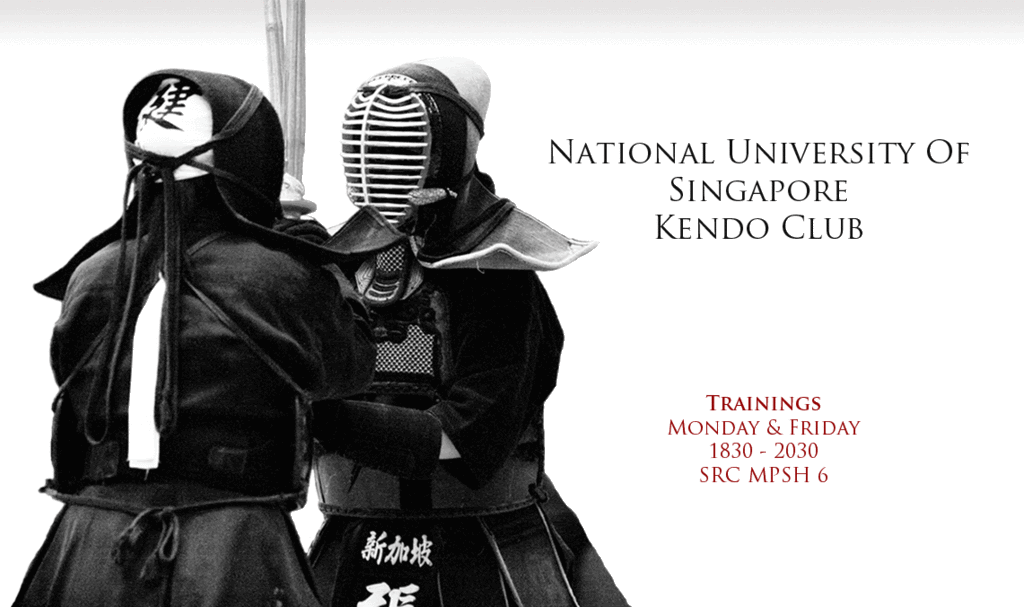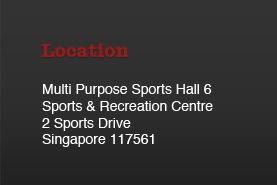The 9th Asean Kendo Tournament was held on the 23rd to 24th of October 2010. This year's AKT was hosted by Singapore and had participants from Thailand, Vietnam, Malayia, Brunei and Indonesia.
March-in of the tournament participants
Many of our shimpans also took the time to come to Singapore from overseas!
The NUS Kendo Club was proud to have our very own members representing Singapore in the men's national team! Yong He, Wenhao, Zehao, Gervinn, and Cheefung trained very hard for almost half a year leading up to the actual tournament.
Team Singapore (:
Of course, every kendo tournament requires manpower to help keep it running smoothly. Many of us volunteered to help out in running the event, together with fellow kendokas from SKC, NYP and SMU. We were tasked to help out in court official roles such as court managers, taggers, time-keepers and time-keepers.
Setting up the courts
It's early in the morning but we're all ready for the matches to begin!
For most of us, it was our first time carrying out these roles. Although we had some prior experience in running tournaments with our NUS Championship Series, it could not possibly compare to one on such a grand scale as AKT.
Prior to the actual tournament, we held two dry runs on weekends to pre-empt any possible problems and to simulate the flow of the event. During these, we learnt many details that we had to pay careful attention to. Court officiating was highly meticulous! Some of the many things we were taught by senseis and senpais included how to properly fold the shimpan flags, present scores on the scoreboard, and even the correct method to tag a kendoka.
As a tagger on the actual day, I was both nervous and excited to be a court official.
Proud to be a part of AKT!
In a round-robin playoff, as was planned, the fighters on court often changeover very quickly--but that would mean that we had to tag them just as rapidly! Sometimes, we had to change tag colors in split seconds. Thankfully we managed all that with plenty of teamwork between the three taggers we had for each court :)
Many of our international friends were new to the courts in SKC, and we also had to help direct them to the right areas before their matches. Often, they too were nervous (or just really tired after their tough matches!). We had to make sure that we did not give them the wrong information. We would remind them when their next match was, and what colour they were tagged. If they had queries, they usually came to us too, such as asking who their opponent was or when the team could make changes to their line-up.
Shannon's tare--unfortunately he is fighting for Malaysia
Another difficulty that we faced was having to identify the right person to tag! Since we didn't know our international visitors by their faces, we would often run around with tags in our hand, our eyes desperately combing the many kendokas' tare in search of the number we had to tag. By the second day, we were actually able to associate some kendokas' faces with their tare numbers.
Although tagging was tiring and potentially nerve-wrecking, it was a great way to get up close and personal to the matches. Exciting matches were fought right before our eyes and when we had the chance to watch, they often blew us away. There were many new techniques and styles of fighting that we could observe, such as how to fend off a jodan-player. As I watched our Women's team triumph their way to the finals, I was also very inspired by how strong they were (:
Some videos
Thrilling match between Singapore (red) and Thailand (white).
Both teams have drawn after the team round-robin playoff. One player from each team has been chosen to battle it out, and the winner of the first point will determine which team will proceed to the semi-finals. Suresh takes the point for Singapore after an intense battle! The crowd goes wild... myself included.

Godou (goodwill) keiko at the end of each day
In all, I'm very grateful to have been a part of AKT. It has been a wonderful opportunity to watch high-level kendo, meet international kendokas and keiko with them, and of course, learn how to run a tournament. :)






























